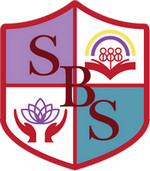Tel: 0 2428 4572-5
fax: 0 2427 1979
Email: sombunwit@hotmail.com
Monday – Friday: 07.30 am – 17.30 pm
Saturday: 08.30 am – 15.00 pm
Holiday : Sunday, Saturday, Public Holiday
Timetable: 08.30 – 14.30 น.
—-
Sombunwit Trilingual School
571 Rama 2 rd. Bangmod
Jomthong Bangkok 10150

Multiple Intelligences
Each individual possesses a unique blend of all the intelligences. Gardner firmly maintains that his theory of multiple intelligences should “empower learners”, not restrict them to one modality of learning.
Howard Gardner claims that all human beings have multiple intelligences. These multiple intelligences can be nurtured and strengthened, or ignored and weakened. He believes each individual has 8 intelligences:
1. Linguistic Intelligence (Linguistic Intelligence)
using words effectively. These learners have highly developed auditory skills and often think in words. They like reading, playing word games, making up poetry or stories. They can be taught by encouraging them to say and see words, read books together. Tools include computers, games, multimedia, books, tape recorders, and lecture.
reasoning, calculating. Think conceptually, abstractly and are able to see and explore patterns and relationships. They like to experiment, solve puzzles, ask cosmic questions. They can be taught through logic games, investigations, mysteries. They need to learn and form concepts before they can deal with details.
3. Visual-Spatial Intelligence
think in terms of physical space, as do architects and sailors. Very aware of their environments. They like to draw, do jigsaw puzzles, read maps, daydream. They can be taught through drawings, verbal and physical imagery. Tools include models, graphics, charts, photographs, drawings, 3-D modeling, video, videoconferencing, television, multimedia, texts with pictures/charts/graphs.
use the body effectively, like a dancer or a surgeon. Keen sense of body awareness. They like movement, making things, touching. They communicate well through body language and be taught through physical activity, hands-on learning, acting out, role playing. Tools include equipment and real objects.
5. Musical Intelligence
show sensitivity to rhythm and sound. They love music, but they are also sensitive to sounds in their environments. They may study better with music in the background. They can be taught by turning lessons into lyrics, speaking rhythmically, tapping out time. Tools include musical instruments, music, radio, stereo, CD-ROM, multimedia.
understanding, interacting with others. These students learn through interaction. They have many friends, empathy for others, street smarts. They can be taught through group activities, seminars, dialogues. Tools include the telephone, audio conferencing, time and attention from the instructor, video conferencing, writing, computer conferencing, E-mail.
7. Intrapersonal Intelligence
understanding one’s own interests, goals. These learners tend to shy away from others. They’re in tune with their inner feelings; they have wisdom, intuition and motivation, as well as a strong will, confidence and opinions. They can be taught through independent study and introspection. Tools include books, creative materials, diaries, privacy and time. They are the most independent of the learners.
8. Naturist Intelligence
ability to recognize and categorize plants, animals and other objects in nature
Refer to: ”The Distance Learning Technology Resource Guide,” by Carla Lane
Source: http://www.tecweb.org/styles/gardner.html